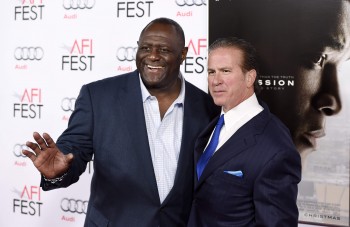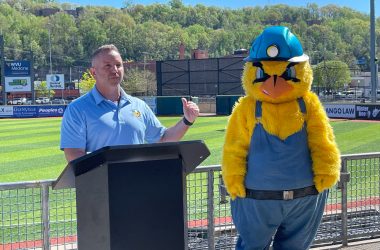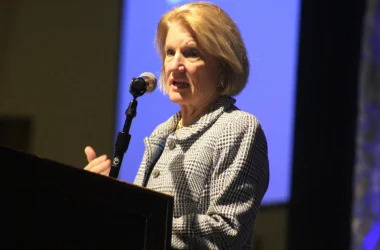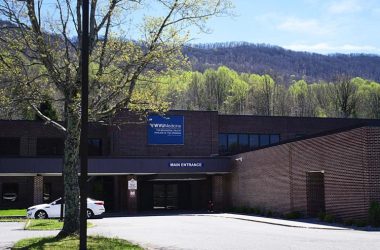
Dr. Julian Bailes (right) and former New York Giants defensive end Leonard Marshall attend the Nov. 10 premiere of “Concussion” in Los Angeles. The film tells the story of Dr. Bennet Omalu’s discovery of the link between football and brain injuries. In addition to supporting Omalu’s research, Bailes worked with Marshall to develop a protocol to determine the occurence of concussions.
CHARLESTON, W.Va. — Mike Webster was a key part of one of the greatest football dynasties in NFL history. He played center for 17 years, won four Super Bowls with the Pittsburgh Steelers, went to nine Pro Bowls and was elected to the Pro Football Hall of Fame.
When he died in 2002, at age 50, he was homeless, living in his truck, often using a Taser to stun himself into unconsciousness to dull his pain.
“Iron Mike” Webster had chronic traumatic encephalopathy (CTE), a brain disease caused by the repeated blows to the head he sustained during his NFL career.
Dr. Bennet Omalu, the Pittsburgh pathologist who diagnosed Webster and discovered and named CTE, published a paper of his findings in 2005. The National Football League, a $9-billion-a-year business, attacked his work and demanded a retraction.
Only one person associated with the NFL stood up for Omalu’s work — Dr. Julian Bailes, chairman of neurosurgery at West Virginia University Hospitals. Bailes, a former team doctor for the Steelers and for WVU, had treated Webster.
He called Omalu to tell him, in essence, “I believe you.”
Omalu ended up moving the brain tissue that he had been studying — in his living room — to Bailes’ lab in Morgantown.
Omalu and Bailes would go on to co-found the Brain Injury Research Institute, and become two of the loudest and earliest voices warning of the NFL’s concussion crisis.
Their story is the subject of a major Hollywood movie that opens nationally Friday…





